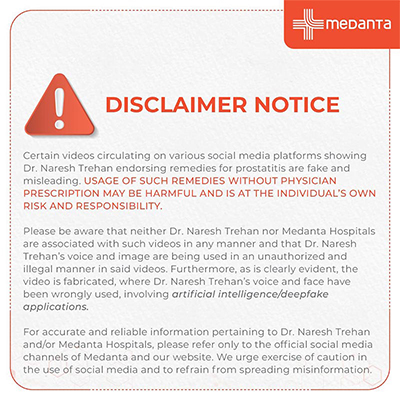What Is a Sigmoidoscopy? Procedure, Preparation and Risks

TABLE OF CONTENTS
A sigmoidoscopy is a minimally invasive medical examination that allows doctors to view the inside of the lower part of the large intestine. This procedure examines explicitly the rectum and sigmoid colon using a thin, flexible tube fitted with a light and camera. The device, called a sigmoidoscope, transmits images to a monitor, giving doctors a clear view of the intestinal lining.
This article explains everything you need to know about sigmoidoscopy procedures and how to prepare for the procedure.
What is a Sigmoidoscopy?
During a sigmoidoscopy, the patient lies on their side on an examination table. The doctor gently inserts the sigmoidoscope through the anus and guides it through the rectum & into the sigmoid colon to examine these vital organs.
The procedure is relatively quick, usually taking 10 to 20 minutes to complete. Unlike other gastrointestinal examinations, a sigmoidoscopy generally does not require sedation, meaning patients remain awake throughout. This makes the recovery process faster and eliminates risks associated with anaesthesia.
If the doctor identifies anything unusual during the examination, such as polyps or inflamed tissue, they can remove a sample using special instruments inserted through the sigmoidoscope.
There are two types of sigmoidoscopy:
Flexible sigmoidoscopy: Uses a bendable tube that can navigate the curves of the sigmoid colon and is generally the preferred approach
Rigid sigmoidoscopy: Uses a straight, stiff tube with less manoeuvrability
When Is a Sigmoidoscopy Recommended?
A sigmoidoscopy serves both diagnostic and screening purposes.
Diagnostic purposes: As a diagnostic tool, doctors might recommend this procedure to assess symptoms such as:
Rectal bleeding or blood in stool
Changes in bowel habits
Chronic diarrhoea
Unexplained weight loss
The procedure helps identify various conditions affecting the lower intestine, including:
Polyps (abnormal growths that could become cancerous)
Inflammation (colitis or proctitis)
Ulcers in the colon or rectum
Diverticulitis (infected pouches in the intestinal lining)
Haemorrhoids
Strictures (narrowing of the colon)
Tumours and early signs of cancer
Screening purposes: For screening purposes, sigmoidoscopy aims to detect bowel cancer or pre-cancerous growths in people without symptoms. The U.S. Preventive Services Task Force advises starting colorectal cancer screening at age 45, with earlier screening for those at higher risk. A sigmoidoscopy screening is typically recommended every five years for adults between 45 and 75. However, this schedule may vary based on your overall health, previous test results, and personal preferences.
Importance in Colorectal Cancer Prevention
Sigmoidoscopy plays a crucial role in preventing colorectal cancer through the early identification and removal of pre-cancerous polyps. It appears particularly effective at reducing colorectal cancer mortality in the distal colon—the area directly examined during the procedure. This effectiveness highlights both the strengths and limitations of sigmoidoscopy. While excellent for detecting issues in the sigmoid colon and rectum, it cannot directly examine the ascending or transverse colon.
If sigmoidoscopy detects polyps or cancer, doctors typically recommend a follow-up colonoscopy to examine the entire colon. This is because the presence of abnormalities in the sigmoid colon often indicates potential issues throughout the rest of the colon.
Risks Associated With a Sigmoidoscopy
Although sigmoidoscopy is generally safe, it's essential to understand the potential risks. Most individuals experience minimal discomfort and recover quickly. However, like all medical procedures, there are some risks that patients should be aware of:
Damage to the colon: Colon damage typically occurs when the sigmoidoscope tube creates small tears in the intestinal lining. This usually happens during instrument insertion or while navigating tight turns in the sigmoid colon.
Bleeding: In cases where tissue samples are taken, or polyps are removed
Infection: The procedure introduces foreign objects into the digestive tract, which can occasionally lead to bacterial infections if equipment sterilisation is inadequate or if bacteria from the intestine enter the bloodstream through small tears.
Intestinal perforation: Perforation occurs when the sigmoidoscope or other instruments create a tear that extends through all layers of the intestinal wall. Perforations allow intestinal contents to leak into the abdominal cavity, potentially causing peritonitis (inflammation of the abdominal lining). This condition requires immediate medical intervention and often surgical intervention.
Aside from these major complications, many patients experience mild side effects after the procedure, primarily:
Gas and bloating due to the air inserted during the examination
Mild abdominal cramping
Temporary changes in bowel habits
Slight rectal irritation
When to Seek Medical Attention
While mild discomfort after sigmoidoscopy proves normal, certain symptoms require immediate medical attention. Patients should contact their doctor if they experience any of the following symptoms:
Persistent, severe abdominal pain
Heavy rectal bleeding or blood clots
Bleeding from the rectum that continues beyond 24 hours
Fever of 100°F (37.8°C) or higher, which may indicate infection
Nausea and vomiting, particularly when accompanied by abdominal pain
Inability to pass gas
Failure to have a bowel movement
Abdominal swelling or distension
Dizziness, weakness, or fainting
These symptoms might indicate serious complications like perforation, significant bleeding, or infection.
Preparing for a Sigmoidoscopy
Proper preparation is crucial, ensuring your sigmoidoscopy procedure yields accurate results. The colon must be thoroughly emptied to allow clear visualisation of the intestinal lining. Following the preparation instructions helps ensure a successful examination.
What to Expect Before the Procedure
Preparation for a sigmoidoscopy typically begins several days before the actual procedure. Doctors will give you specific instructions tailored to your medical situation. Initially, you will discuss your medical history and any medicines you currently take with your doctor.
You should inform your doctor about the following:
Any allergies to medications, latex, or anaesthesia
All current medications, including prescription, over-the-counter, vitamins, and supplements
Blood-thinning medications
Any history of bleeding disorders
Diabetes medications
Dietary and Bowel Prep Instructions
The cleanliness of your colon directly affects how well your doctor can examine it. Typically, preparation begins with dietary changes several days before the procedure. Your doctor will likely ask you to follow a low-fibre diet starting 3 days before the bowel preparation medication.
A low-fibre diet includes foods that digest easily and leave minimal residue. Here's what you can eat:
Foods permitted:
White bread and pasta
Cornflakes
White rice
Eggs and plain yoghurt
Chicken and fish
Mashed potatoes (no skin)
Well-cooked, sieved vegetables
Tinned fruit (no skin/seeds)
Plain crackers, custard, jelly
Foods to avoid:
Wholemeal bread/cereals
Brown rice
Fruit/vegetable skins
Seeds and nuts
Pulses and dried fruit
Sweetcorn, peppers, tomatoes
The day before your procedure, your dietary restrictions will intensify. At this stage, you may be instructed to:
Eat breakfast, then switch to clear liquids only
Take laxative medication as prescribed
Avoid red or purple liquids as they can interfere with visualisation during the procedure
Clear liquids that are typically permitted include:
Water
Tea or coffee (without milk)
Clear fruit juices like white grape or apple
Clear soups and broths
Sports drinks (orange, lemon-lime)
Jelly (not red or purple)
In essence, the bowel preparation for a sigmoidoscopy is less intensive than a colonoscopy but still requires careful attention. Your doctor may prescribe one of several bowel preparation methods:
Laxatives
Rectal enemas (typically used on the day of the procedure)
Suppositories
Limited or liquid diet
Day-of procedure Guidelines
On the day of your sigmoidoscopy, you'll need to follow several necessary final preparation steps. First and foremost, most facilities require you to stop drinking all liquids 2-4 hours before your appointment time. This helps prevent complications during the procedure.
If your doctor has prescribed enemas as part of your preparation, you'll typically need to administer them about 1-2 hours before leaving for your appointment. Many preparation protocols require two Fleet enemas spaced approximately 30 minutes apart. These enemas help clear the lower portion of the colon, which is the area examined during a sigmoidoscopy.
Throughout your preparation, wear comfortable clothing and bring your medical information and a list of all medications you take to your appointment. Before the sigmoidoscopy, your doctor will explain what will happen and answer any questions.
What Happens During the Procedure?
A sigmoidoscopy typically takes between 15 to 20 minutes to complete, making it a relatively brief medical procedure compared to a full colonoscopy.
Step-by-step Overview
The sigmoidoscopy begins with proper positioning to help the doctor access the lower colon easily. Most people undergo sigmoidoscopy without sedation or anaesthesia. However, if you're feeling anxious, do chat with your doctor—they might offer mild sedation to help you relax. The medical staff will position you for the examination, typically in one of two positions:
Left lateral (Sims) position – lying on your left side with knees bent toward your chest
Knee-chest position – kneeling on the table with torso bent forward
First, the doctor performs a digital rectal examination. They apply lubrication to their gloved finger and gently insert it into your rectum to check for any obvious abnormalities and to help lubricate the anal passage. This initial examination provides valuable information before proceeding with the sigmoidoscope.
After this preliminary check, the procedure unfolds as follows:
The doctor lubricates the sigmoidoscope and gently inserts it through your anus into the rectum
Air or carbon dioxide is pumped into your colon to expand it, providing better visibility of the intestinal lining
The doctor slowly advances the scope through the rectum and into the sigmoid colon
The camera sends live images to a monitor, allowing a thorough examination of the colon walls
If the doctor spots polyps or suspicious areas, they may take tissue samples (biopsies) or remove small polyps
Once the examination is complete, the doctor slowly withdraws the scope
After the Sigmoidoscopy: Recovery and Results
Recovery from a sigmoidoscopy begins immediately following the procedure. Most patients experience a smooth transition back to their normal routine within a few hours.
If your doctor used sedation during the procedure, different rules apply. You won't be permitted to drive home, so ensure you've arranged for transportation beforehand. Even with sedation, most patients find recovery quick compared to more invasive procedures.
Some tips for managing immediate recovery:
Take slow walks to help release trapped gas
Drink warm beverages or peppermint water to ease gas discomfort
Take ordinary pain relief medication if needed, following standard dosage instructions
Resume your normal medicines immediately after the procedure
Conclusion
Sigmoidoscopy stands as a valuable medical procedure that helps doctors examine and treat issues in the lower colon. The procedure's minimal invasiveness, quick recovery time, and effectiveness make it an excellent option for both diagnostic purposes and routine cancer screening.
Though sigmoidoscopy examines only the lower portion of the colon, research shows its significant impact on reducing colorectal cancer rates. The procedure allows doctors to detect and remove potentially dangerous polyps before they develop into cancer. Additionally, the quick recovery time and lower risk profile compared to colonoscopy make it a practical choice for many patients.
Most people experience minimal discomfort during and after the procedure. The recovery process typically takes just a few hours, allowing patients to return to their normal activities the same day. While some patients might notice mild bloating or cramping immediately after the examination, these effects usually resolve quickly.
The success of a sigmoidoscopy depends largely on proper preparation and following post-procedure care instructions. Patients should watch for unusual symptoms after the procedure and contact their healthcare provider if they experience severe pain, heavy bleeding, or fever. Regular screening through procedures like sigmoidoscopy, combined with prompt attention to concerning symptoms, helps maintain optimal digestive health and prevent serious complications.
FAQs
How long does a sigmoidoscopy procedure typically take?
A sigmoidoscopy usually takes between 15 to 20 minutes to complete. It's a relatively quick procedure compared to a full colonoscopy.
Is sedation required for a sigmoidoscopy?
Most people undergo sigmoidoscopy without sedation or anaesthesia. However, if you feel anxious, discuss this with your doctor, as some facilities offer mild sedation to help you relax.
What are the common risks associated with a sigmoidoscopy?
While serious complications are rare, potential risks include minor bleeding, infection, and, in rare cases, perforation of the colon. Most people experience only mild, temporary discomfort such as bloating or gas.
How should I prepare for a sigmoidoscopy?
Preparation typically involves following a low-fibre diet for a few days before the procedure, taking laxatives or enemas as prescribed, and fasting from clear liquids a few hours before the examination. Your doctor will provide specific instructions.






